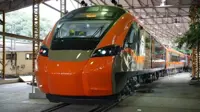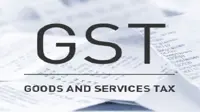Will data silence voice ?
By Samrat Sinha | 22 Apr 2005
Revenues through voice continue to grow. It would take years for data to overtake voice and by that time voice, as we know it today, would have morphed into data.
For the last so many years, we have all been hearing the constant refrain that voice would cease to be important in the telecom industry and data would be coronated in the near future. Well that has not really happened. Even in the developed telecom markets, voice still rules the roost and remains the cash cow.
In terms of revenue, data's share is rising steadily and the advent of cutting edge data applications ensures a brisk growth rate. But voice remains the dominant application today. 'Minutes of usage' (MoU), the metric for gauging voice telephony has been rising exponentially with every passing year.
The wide acceptance of Centrex facilities in the fixed line POTS (plain old telephone service) and CUG (closed user group) in cellular services all point to the fact that people want to talk more and more albeit at low / fixed cost. Today, most cellcos have CUGs for corporates and "friends and family" offers for individual customers aimed at creating sticky voice users.
Take Indiatimes' voice-based service, "helpline-infoline", as a case in point. Though its internet and SMS push service "8888" for mobile applications is hugely successful, it couldn't resist the lure of the profits of the voice market. One can have similar information or entertainment updates through this purely voice service.
Going beyond empirical evidences and statistics, one should remember that voice satiates one of mankind's most basic and inherent needs — the need to talk. Whereas data fulfils a contrived need — the need for information and implied communication. Even today human behaviour pointers favour voice over data. Be it ordering pizzas from Dominoes or goods from your neighbourhood grocer, the most preferred way is calling up and placing an order through the voice route.
Sustainability
of any service and its proliferation depends on current usage patterns as
well as new innovations that can be amenable to it. Looking for current cues
of usage, one may analyse the mobile telecom industry. In India, the pre-paid
market comprises more than 70 per cent of cellular services' market —
a huge mandate for voice services calling the shots here.
The pre paid market is thoroughly voice driven hence companies like Pre-Paid India (with brand Oxigen) and E-charge Tech are trying to en-cash this phenomenon by voucher free charging through electronic re-charging of pre-paid mobile customers. One must not forget electronic "top-ups" through bank ATMs. These facilities were introduced for aiding voice telephony. A similar trend is prevalent world-wide, too.
Reliance Infocomm has fired another salvo by announcing unlimited talk whereby its 'On Net' (a jargon for within the network calling) is toll free for pre-paid and post paid customers in a given circle. And this is obviously aimed at voice, voice and more of the voice pie. Other operators are expected to follow suit. Idea Cellular's "I-card" services aimed at the youth market has the USP of reduced call rates for voice usage in the "I-Card" club.
A survey of cellular users conducted in Delhi sometime back, reveals that talking consumes over 85 per cent of the pre-paid card value and over 70 per cent usage value of post paid users. As per TRAI (Telecom Regulatory Authority of India) data, 80 per cent of new mobile subscriber additions every month is still in the pre-paid category only. In its performance Indicators of Telecom Services released last June the average monthly minutes of usage(MoU) for cellular services have been shown as steadily growing from 210-222 minutes in FE 2002-2003 to 301-322 in FE 2003-2004.
Though SMS applications are quite popular in the youth segment, but ask any collegian whether she would fancy a device with text messaging data capability alone she would snap back "SMS / MMS is cool but voice is hot."
The booming businesses of call centres can vouch for voice being the supreme application as most of the contact centres are pure play voice-based entities where Inbound or outbound tele-calling is the order of the day. The youth segment is lapping up voice like never before as voice is the biggest employment generator these days where average employee age in any BPO is between 20 and 25. Domestic call centres are using voice calling for its 'pester power' to coax users into buying something or the other.
The predominance of voice in telecom can further be seen in the 'public call office' (PCO) domain. For the quarter ending March 31st, 2004 131,436, new PCOs were added taking the total base in the country to 19,24,178. Though margins are higher in data applications as compared to voice, data services have yet to measure up to voice in a sizeable way. Agrees, chief marketing and commercial officer, of a leading cellular operator, "Vanilla voice services provide the lowest margins. But they are like dal, roti and chawal" the mainstay per se.
Amit Bose of Tata Teleservices avers, "Currently VAS (value added services) contributes to about 2 per cent of our total revenues. With our new VAS offerings, we intend to shortly increase our revenues to about 8 to 10 per cent. Even though we expect basic voice to continue to have a major share, we also expect a sustained and promising growth of the non-voice-based value added service category in the coming years."
Buoyed by the predominance of voice, Tata Tele and Hutch had launched Push to Talk (PTT) services wherein the entire country became a toll free service area at a fixed monthly rental. The disruptive potential of this pure voice service has run it into rough weather with TRAI maintaining that voice remains the 'killer application' as on date. It would take years for data to overtake voice and by that time voice as we know it today would have morphed into data! Well one can readily imagine packetised voice traversing the airwaves or the wires as a multi media clip wherein not only speech but also image of the communicators would also be transmitted.
That is voice-data consolidation where the simultaneous transmission of both voice and data over a single packetised communications network. Such a scenario combines the circuit-switched voice network with the routed packet data network to achieve efficiencies in technology and reduce equipment costs.
Steve Hook, director of VAR React Technologies, says: "Businesses find that most of their calls are made to their own national or international branch offices. When you can make those calls for virtually nothing, it's a compelling offer. This again implies organisations are talking more than ever."
Competition is set to intensify in the voice market, with increasingly sophisticated pricing models. "Firms are already looking at offering integrated solutions using mobile voice VPNs, location- based billing and voice over wireless LANs."
Data will overcome, but it will take time.

































